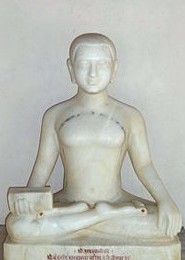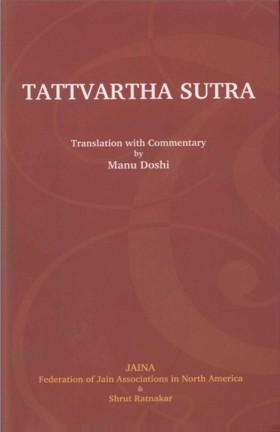04.04 Indrasāmāniktrāyatrinshpārishadyātmarakshal-okapalānikprakirnakābhiyogyakilvishikāshchaīkashah
Audio: Sanskrit: इन्द्रसामानिकत्रायस्त्रिंशपारिषद्यात्मरक्षलोकपालानीकप्रकीर्णकाभियोग्य किल्विषिकाश्चैकशः ।
Hindi: चतुर्निकाय के उक्त दस आदि एक-एक इन्द्र, सामानिक, त्रायस्त्रिंश, पारिषद्य, आत्मरक्ष, लोकपाल, अनीक, प्रकीर्णक, आभियोग्य और किल्विषिकरूप हैं।
04.05 Trāyatrinshlokpālavarjyā Vyantarjyotishkah
| Audio: | |
| Sanskrit: | त्रायस्त्रिंशलोकपालवर्ज्या व्यन्तरज्योतिष्काः । |
| Hindi: | व्यन्तर और ज्योतिष्क देव त्रायस्त्रिंश तथा लोकपाल रहित हैं। |
04.04-05
English: There are positions like Indra, Sāmānik, Trāyatrinsh, Pārishadya, Ātmaraksha, Lokpāl, Anik, Prakirnak, Ābhiyogya and Kilvishik. There are no Trāyatrinsh and Lokpāl amongst Vyantara and Jyotishka types. There is a sort of hierarchy amongst the cosmic beings comparable to that prevailing in the human society. They have ten cadres. The chief is called Indra; co-chiefs occupying the positions comparable to peers are called Sāmānik; those occupying the positions of ministers or priests are called Trāyastrinsh; those who act as counselors are called Pārishadya; those who work as bodyguards are called Atmaraksha; those concerned with defending the borders are known as Lokapāl; those belonging to the fighting cadre are known as Anik; those who are like ordinary citizens are known as Prakirnak; those who serve as attendants are called Abhiyogya and those, who occupy the lowest position are known as Kilvishak. Vyantar and Jyotishka types do not have the ministerial and border defending cadres. Their hierarchy therefore consists of eight cadres
 Acharya Umaswati
Acharya Umaswati
